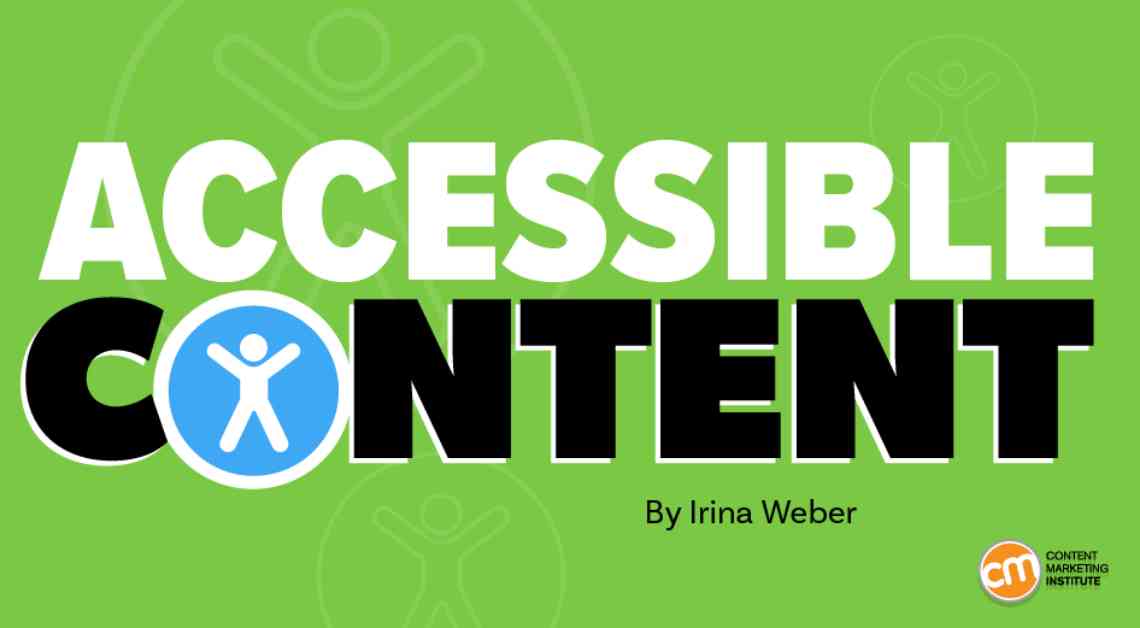Creating Accessible Content: 8 Essential Tips for Marketers
In today’s digital landscape, ensuring that your content is accessible to all individuals is crucial. While Google continues to introduce new accessibility features and updates, it is essential for marketers to take proactive steps to break down barriers and make their content inclusive for everyone.
The Web Content Accessibility Guidelines (WCAG) serve as a foundation for creating accessible digital content and websites. These guidelines are built on four key principles: operable, perceivable, robust, and understandable. By following these principles, marketers can ensure that their content is accessible to individuals with diverse needs, such as using alternative navigation methods like keyboards, voice commands, screen readers, or screen magnifiers.
To achieve accessibility compliance and create content that caters to all members of the audience, marketers can implement the following practical tips:
Optimize Title Tags and Headings
One of the first steps in creating accessible content is to optimize title tags and headings. Clear and unique page titles and headings, including relevant keywords, help visitors understand the content’s structure and easily find the information they need. Ensure that your headings are in sequential order and precisely describe the content to provide a logical flow for users.
Create Accessible Tables
Tables can pose challenges for screen readers if not created correctly. To make tables accessible, avoid copying and pasting from other documents or using image files. Instead, use cascading style sheets (CSS) to create tables that are easily readable by voice assistants and screen readers.
Use Descriptive Anchor Text for Links
When adding links to your content, use descriptive anchor text that clearly indicates the destination or purpose of the link. Avoid generic phrases like “click here” and opt for specific, informative anchor text that helps users understand where the link will take them.
Include Descriptive Alt Text for Images
Adding descriptive alt text to images is essential for making your content accessible to individuals with visual impairments. Alt text helps search engines interpret image content, allows visually impaired users to understand the context of images, and can improve your website’s visibility on search engines. Ensure that every image and video on your site has descriptive alt text to enhance accessibility.
Add Public Sitemap
Incorporating a public sitemap on your website can help visitors easily navigate and find the content they need. An XML sitemap is beneficial for search engine crawlers, while an HTML sitemap provides a clear overview of essential pages for visitors. By including both types of sitemaps, you can improve accessibility and user experience on your website.
Make Social Media Content Accessible
While many marketers focus on website accessibility, it’s vital to ensure that social media content is also inclusive. Consider adding captions, transcripts, and alt text to videos and images shared on social media platforms to make your content accessible to a broader audience. Incorporating sign language interpreters into videos and events can further enhance accessibility and localize the conversation for users.
Use Accessible Language
Using clear and simple language in your content can improve accessibility for all users. Consider providing a simplified version of complex content and explaining uncommon words, idioms, or phrases to make the content more understandable. Tools like Grammarly or Hemingway Editor can help simplify your content and ensure it is accessible to a wider audience.
Create Accessible Calls to Action
Crafting accessible calls to action (CTAs) is essential for encouraging users to take the next step on your website. Write descriptive and action-oriented text for CTAs, consider color contrast for readability, and place primary CTAs prominently on the page. By following these tips, you can create CTAs that are accessible and effective for all users.
Regularly Assess Content for Accessibility
To maintain accessibility compliance, use website accessibility checker tools to evaluate your content regularly. Solicit feedback from users with disabilities to test your site’s accessibility and make necessary improvements. By prioritizing accessibility in your content creation process, you can create a more inclusive online environment for all users.
In conclusion, creating accessible content is not just a best practice—it is a necessity in today’s digital world. By following these tips and guidelines, marketers can ensure that their content is inclusive, engaging, and accessible to all individuals. Embracing accessibility not only enhances user experience but also demonstrates a commitment to diversity and inclusion in online spaces.
By incorporating these strategies into your content creation process, you can make a positive impact on your audience and contribute to a more accessible digital landscape for everyone. Remember, accessibility is not a choice—it’s a fundamental requirement for creating a truly inclusive online environment.
Let’s continue to prioritize accessibility in our content creation efforts and work towards a more inclusive and accessible digital future.









